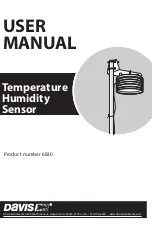
3.5
Parameter transmission
For parameter transmission, the ‘parameter channel’ via which data can be exchanged transparently via the
function block protocol is available. Thereby, all possible protocol access modes are supported (individual
access, tens block and overall block). Communication to the controller is transparent, i.e. the user himself is
responsible for monitoring ranges, operating modes (auto/hand) etc.
The parameter channel is designed for large amounts of data with low requirements on the transmission
speed.
3.5.1
Message elements
Some terms which are used in the following text are explained below:
Element
Description
Rem.
ID
Telegram mode identification
A
ID1
Format of data to be transmitted or to be received
B
Code
Addressing code of a datum
C
FB no.
Function block number
D
Fct no.
Function number
E
Type
d.c. (always ‘0’)
Rem. A ID
This element identifies the telegram type:
ID = 0x10
=
start telegram 1)
ID = 0x68
=
data telegram
ID = 0x16
=
end telegram
Rem. B ID1
This element identifies the file format:
ID1 = 0
=
Integer
ID1 = 1
=
Real value as fixpoint
Rem. C Code
The code identification is decimal and the range includes ‘00’...’99’ as well as ‘178’
=
B2 and ‘179’
=
B3.
Rem. D FB no. (function block number)
A function block is addressed with a function block number. It is within ‘0’ and ‘250’. Channel addressing is
also via the function block number.
Function block number ranges:
w
0general data for the overall instrument
w
1 - 99 fixed function blocks
Rem. E Fct. no. (function number)
A function as a partial address of a function block is also addressed with a function number. It is within ‘0’
and ‘99’.
Function number ranges:
w
0function general
w
1 - 99 other functions
Process data
9499 040 50511
16
Parameter 1
Parameter 1
Parameter 2
Parameter 2
....
....
....
....
....
....
....
....
....
....
Parameter n
Parameter n
Parameterkanal
1) 0x10 means 10 in hexadecimal
















































